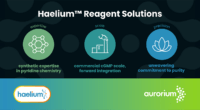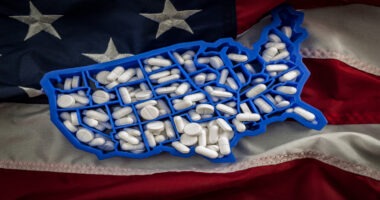The Bio/Pharma Majors: Taking the Pharma Pulse
What stands out in the first quarter 2025 results and year-to-date activity of the large bio/pharmaceutical companies? Is it business as usual? What developments stand out, and what may be in store for the balance of 2025?
By Patricia Van Arnum, Editorial Director, DCAT, pvanarnum@dcat.org
The unknown: US trade policy
As with other industries, the bio/pharmaceutical industry is waiting to see how US trade policy will evolve in the form of tariffs—both overall tariffs and potentially industry-specific tariffs. July 9, 2025, is the deadline now on the table for the implementation of reciprocal tariffs by the US with its trading partners. The Trump Administration first laid out a plan for imposing reciprocal tariffs in February (February 2025) as a means to counter non-reciprocal trading arrangements with its trading partners and as a way to improve US competitiveness, including in manufacturing. Those reciprocal taxes were scheduled to go into effect on April 9, 2025, but the Administration placed a 90-day pause (until July 9, 2025) on their implementation to enable countries to negotiate these tariffs with the US government. One exception was China, which had issued trade countermeasures in response to the pending reciprocal tariffs imposed on it. It is now subject to a 125% import tariff announced by the White House on April 9, 2025, plus an additional 20% fentanyl-related tariff already imposed in February and March (2025), effectively creating a 145% tariff rate on imports to the US from China. Also, for all countries, the reciprocal tariffs are separate from an already imposed baseline tariff of 10%.
Next week (May 7,2025) is another important deadline on the trade front. Another set of tariffs, separate and specific to the pharmaceutical industry, are also under evaluation. Last month (April 2025), the US Department of Commerce initiated an investigation to determine the effects on US national security of imports of pharmaceuticals and pharmaceutical ingredients. Next week (May 7, 2025) is the close of the public comment period to provide input
The investigation was initiated under Section 232 of the Trade Expansion Act of 1962, as amended, which allows the President to impose import restrictions based on an investigation and affirmative determination by the US Department of Commerce that certain imports threaten to impair US national security. In general, a Section 232 investigation considers the following (1) existing domestic production of the product; (2) future capacity needs; (3) manpower, raw materials, production equipment, facilities, and other supplies needed to meet projected national defense requirements; (4) growth requirements, including the investment, exploration, and development to meet them; and (5) any other relevant factors.
Industry response: US-based R&D and manufacturing investment
If and to what extent US import tariffs will be imposed will certainly factor into the cost structures of all industries, including the bio/pharmaceutical industry, with financial exposure specific to individual companies based on the location of their internal and external manufacturing operations and supply chains. One way in which individual companies have responded to changing US trade policy is to emphasize their planned investments in US-based manufacturing and R&D activities. Thus far in 2025 (as of May 1, 2025), several of the large bio/pharmaceutical companies have announced multi-billion, multi-year capital investments in the US as part of already planned investments as well as to highlight additional investment in the US as outlined below.
Johnson & Johnson (J&J). In March (March 2025), J&J announced manufacturing, research and development, and technology investments of more than $55 billion in the US over the next four years, which includes a $2-billion investment in a 500,000-square-foot biologics manufacturing facility in Wilson, North Carolina, which the company started construction of in March (March 2025). In addition, the multi-year investments includes: (1) three new advanced manufacturing facilities and the expansion of several existing sites across the company’s Innovative Medicine and MedTech businesses; (2) investments in R&D infrastructure for developing therapeutics in areas such as oncology, neuroscience, immunology, and cardiovascular disease as well as investments in robotic surgery; (3) increased technology investments in drug-discovery and development activities, workforce training, and business operations.
Roche. Last month (April 2025), Roche announced that it will invest $50 billion in existing and new R&D and manufacturing facilities in its pharmaceuticals and diagnostics operations in the US in the next five years (as reported on April 21, 2025). The investment will include: (1) expanded and upgraded US manufacturing and distribution capabilities for its medicines and diagnostics portfolio in Kentucky, Indiana, New Jersey, Oregon, and California; a gene-therapy manufacturing facility in Pennsylvania; a new 900,000-square-foot manufacturing center to support Roche’s expanding portfolio of weight-loss medicines (location to be announced); a new manufacturing facility for continuous glucose monitoring in Indiana; a new R&D center in Massachusetts; and an expansion and upgrading of its existing pharmaceuticals and diagnostics R&D centers in Arizona, Indiana, and California.
Novartis. Novartis announced last month (April 2025) that it will be investing $23 billion over five years in US-based infrastructure in manufacturing, research and technology across 10 facilities, including seven new facilities. The production capacity will cover both active pharmaceutical ingredients (APIs) and biologic drug substances as well as secondary production and packaging. Specific investments include: (1) establishing a new $1.1-billion research hub in San Diego, California, its second global R&D hub in the US (the other is in Cambridge, Massachusetts), expected to open between 2028 and 2029; (2) building four new manufacturing facilities in soon-to-be-determined states, including three that will make biologic drug substances, drug products, device assembly and packaging, and one facility that will make chemical drug substances, oral solid dosage forms, and packaging; (3) building two new radioligand therapy (RLT) manufacturing facilities in Florida and Texas; and (4) expanding three RLT manufacturing facilities in Indianapolis, Indiana, Millburn, New Jersey, and Carlsbad, California. With these investments, Novartis says it will have manufacturing capacity in the US for all its core technology platforms, including small molecules and biologics.
Eli Lilly and Company. In February (February 2025), Lilly announced plans to bolster its US domestic medicine production by building four new pharmaceutical manufacturing sites in the US. This new investment brings the company’s total US capital expansion commitments to more than $50 billion since 2020. Three of the future US sites announced will focus on manufacturing APIs, reshoring capabilities of small-molecule chemical synthesis, and further strengthening Lilly’s supply chain. The fourth location will extend the company’s global parenteral manufacturing network for future injectable therapies. The company’s previous total domestic capital expansion commitments from 2020 to 2024 totaled $23 billion and represented in the $50-billion expansion plan, included: (1) new sites in Research Triangle Park and Concord, North Carolina; (2) new sites at the LEAP Innovation District in Lebanon, Indiana; (3) expansions and updates to several different manufacturing facilities in Indianapolis, Indiana; (4) development of the new Lilly Medicine Foundry in Lebanon, Indiana; and (5) acquisition and expansion of Lilly’s manufacturing site in Kenosha County, Wisconsin. Last December (December 2024), Lilly had announced a $3-billion expansion of its sterile manufacturing facility in Pleasant Prairie, Wisconsin, which it had acquired from Nexus Pharmaceuticals, a Lincolnshire, Illinois-based specialty- and generic-drug manufacturer of injectable drugs.
Merck & Co. Merck & Co. reported this week (April 29, 2025) that it had started construction of a new $1-billion, 470,000-square-foot biologics Center of Excellence in Wilmington, Delaware, which will house laboratory, manufacturing and warehouse capabilities to enable the launch and commercial production of biologics and therapies, including antibody-drug conjugates. The site will also have the capability to manufacture the company’s top-selling product, Keytruda (pembrolizumab), an immunotherapy for treating multiple cancers. Merck says that its intent is to establish the site as the future US home for producing Keytruda for US patients. Keytruda posted 2024 global sales of $29.5 billion and 2024 US sales of $17.9 billion, with the US representing 61% of its global sales. The laboratory component is expected to be fully operational by 2028, with production of investigational compounds anticipated to start by 2030.
In addition, last month (March 2025), Merck announced the opening of a new, $1-billion, 225,000-square-foot vaccine-manufacturing facility at its Durham, North Carolina, site. Merck says it has invested more than $12 billion to expand US-based manufacturing and R&D research capabilities, with another $8 billion of U.S. capital investment expected by 2028.
Amgen. Amgen announced earlier this month (April 2025) a $900-million expansion of its facility in New Albany, Ohio. Amgen first announced plans to build the Ohio facility in June 2021, and last year (February 2024), the company opened the nearly 300,000-square-foot final product assembly and packaging plant. With its new $900-million facility expansion, the company’s total investment in Central Ohio is more than $1.4 billion. The Ohio expansion follows the company’s announcement last December (December 2024) of a $1-billion expansion to establish a second drug-substance manufacturing facility in Holly Springs, North Carolina. The company broke ground at the facility earlier this year (January 2025). That brought the company’s total planned investment in Holly Springs to more than $1.5 billion, building on its previously announced $550-million commitment.








